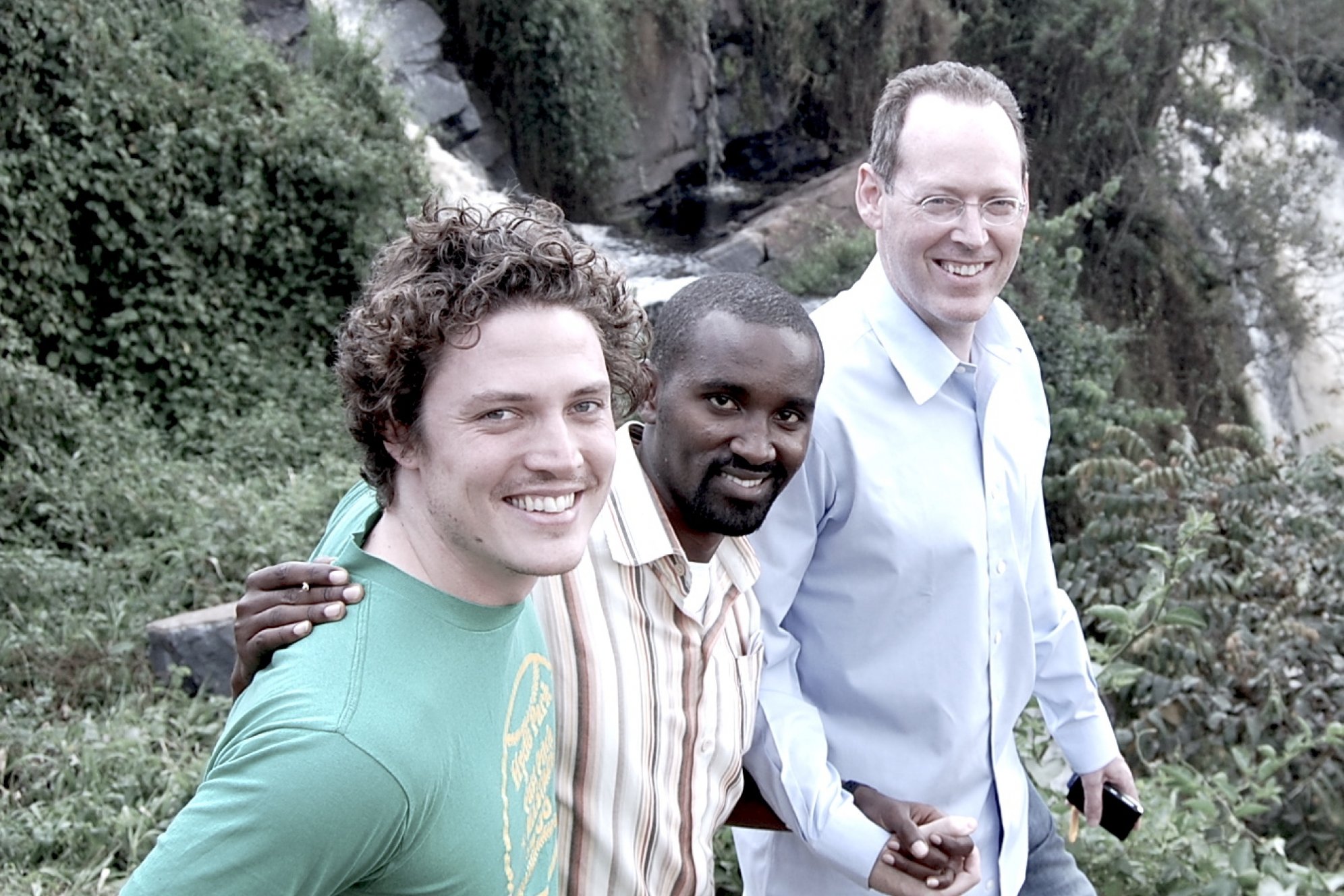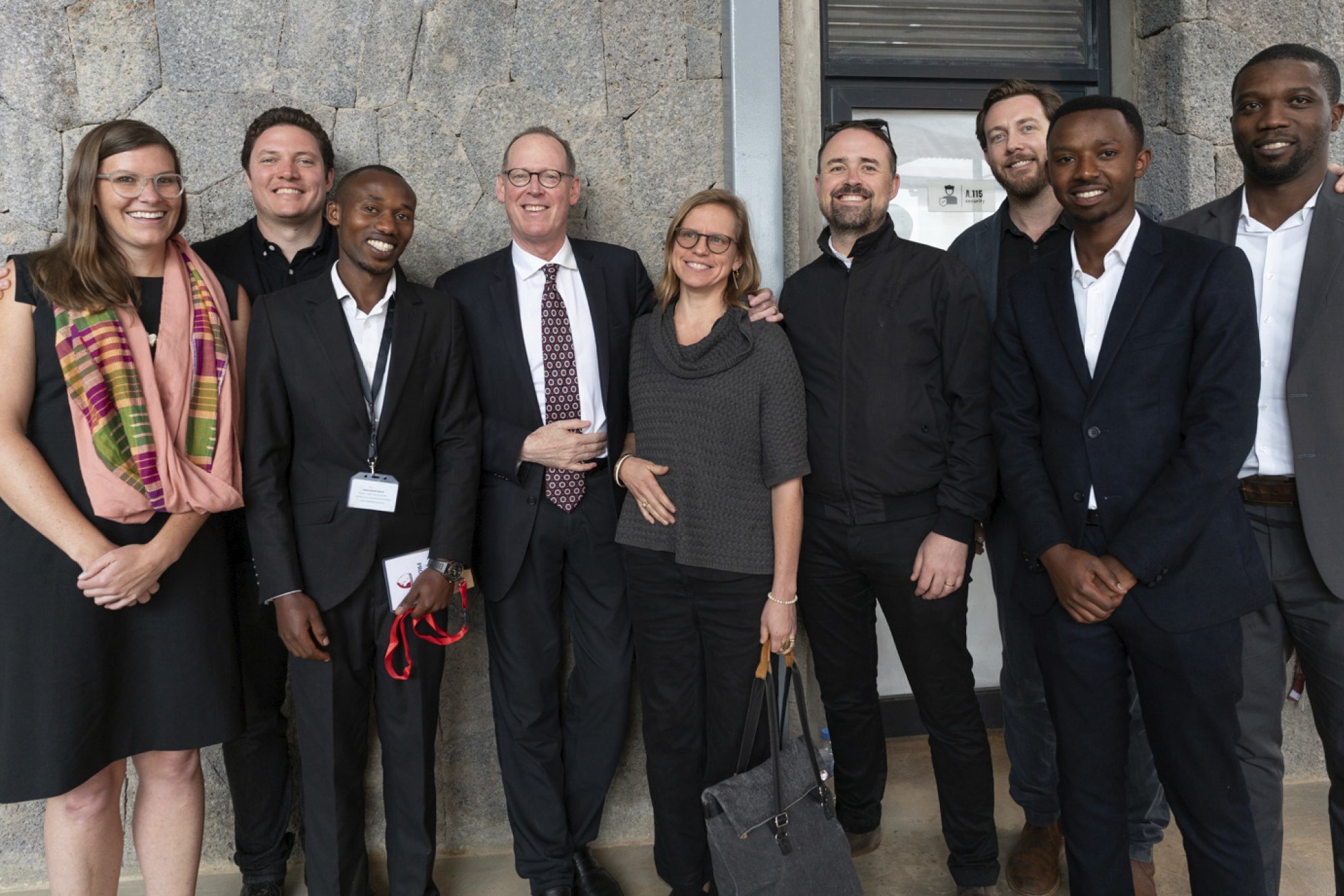Paul Farmer, Our Greatest Architect

“Come, sit next to me on this rock, and tell me about your father.”
That was when Paul Farmer invited me in. I had arrived in Rwanda the previous day; three weeks before, my father had died. I was there to work, and so we were, lifting stones and digging holes to make a fish pond—he insisted on fish ponds—at a rural clinic called Rukira with his team and a group of volunteers. The sun was hot and high, and the red dust of the dry season was settling on my clothes and in my nostrils.
Why were we here, together on a Saturday, digging a fish pond as if our lives depended on it? And why, while we were doing that, was the first thought of this legendary, extremely busy man, “tell me about your grief?” How did he have the time, I thought, to sit me down and inquire about who I was?
I have often told the origin story of my first meeting with Paul, at a lecture he was giving when I was an architecture student. He spoke of buildings as a healthcare problem, which I had never considered. I approached him that night after the lecture to ask which architects he was working with. He responded, “Architects? What architects? Where were you all when we needed you?” He changed the course of my training with that question.
But I have not often told this other story. About what it meant to meet him, after losing my father to cancer, moving across the world in the midst of my deep grief, and being met by Paul’s very first question: how was I surviving? Truthfully, I barely was. And on that stone, I felt my love for my father transfer to him. He took me in, and showed me a path out of the valley. He saved my life.
But the other lesson of why we were there—to ‘beautify’ the grounds of a rural clinic—is equally important. We have to remember that the person we lost on February 21st was not only a father figure and leader, a humanitarian, and a voice for change. Paul Farmer was also one of the greatest designers of our built world, one of the greatest systems thinkers to have ever lived. He was the kind of architect I aspire to be.
At his core, Paul was a builder. From the scale of the human body to the scale of the planet, he understood design as a fundamental tool in delivering better systems, and he saw architecture as a critical, often ignored, medium through which we fully deliver our rights as citizens. Architecture is a right, he would say, because anything less is insufficient and injurious. And he proved it in all the facilities he built, the gardens he tended, and the fish ponds he installed from Haiti to Rwanda, Malawi to Miami.
In the first hospital we designed together, The Butaro District Hospital, in the stunning remote Butaro region of Rwanda where he died, the primary design driver was reducing airborne disease transfer inside hallways. These lessons about breathability and hospital design have now shaped an entire field of naturally ventilated facilities, and offer us a roadmap to think about all buildings after the COVID-19 pandemic subsides. Such elemental and brilliant lessons could only come from someone so proximate to the issues of need. Buildings must perform to protect us, Paul urged, and when they do not, injustice and violence is replicated and accepted.
Paul would not allow us to settle for hospitals that merely functioned better; he demanded more beautiful ones as well. Beauty is a right too, he would say, because it is the ultimate vehicle for the distribution of dignity. And dignity was ultimately the point of it all; dignity was why that fish pond mattered so much. A place of recovery, hospitality, and healing, must heal our whole selves, otherwise, it was not fully functional. The patients, the staff, us, everyone should know that nothing less was acceptable. It was not right.
Paul wrote, “What is the cost of not having architecture?” By cost, he meant cost on lives, on our rights, on our access to fundamental public services like healthcare but not limited to that. With that premise, Paul and his group and colleagues at Partners In Health, went about not just building buildings—from hospitals, to clinics, to schools to houses for those they serve—but they built systems that would replicate and reinforce these aspirations, and this quality. They made the case for why architecture matters, and how it should serve us more effectively. With that they provided a road map out of this pandemic, and out of future ones.
Paul’s leadership lay in his vision and commitment, but it was the empathic foundation of his character that created a vast family whose lives have been forever changed by single moments like I experienced. Those of us who are sitting on stones throughout the world, in spaces of reflection and hope, reminded of how we are inextricably linked to one another. “The training wheels are off,” Paul would say. Time to get to work.
Michael Murphy
MASS Design Group
Founding Principal and Executive Director

Honoring the Life and Legacy of Dr. Paul Farmer
We send our condolences to the friends, family, mentees, partners, and colleagues of Paul, and especially to his wife Didi, and children Catherine, Elizabeth, and Sebastian.
What Paul Farmer taught me about 'dignity construction' in health care
Boston Globe
Tribute: Dr. Paul Farmer (1959-2022), MASS Design Group's First Client
Architectural Record
Remembering Paul Farmer
Partners In Health
He Wanted to Make the Whole World His Patient
New York Times
Paul Farmer Invented a New Way of Caring for One Another
The Atlantic
Paul Farmer was my friend. He should be made a saint—and a doctor of the church
America, The Jesuit Review
'He showed us that the moral high ground can win'
Harvard Gazette
Paul Farmer, relentless champion of global health, showed us how to fight inequities
The Boston Globe
